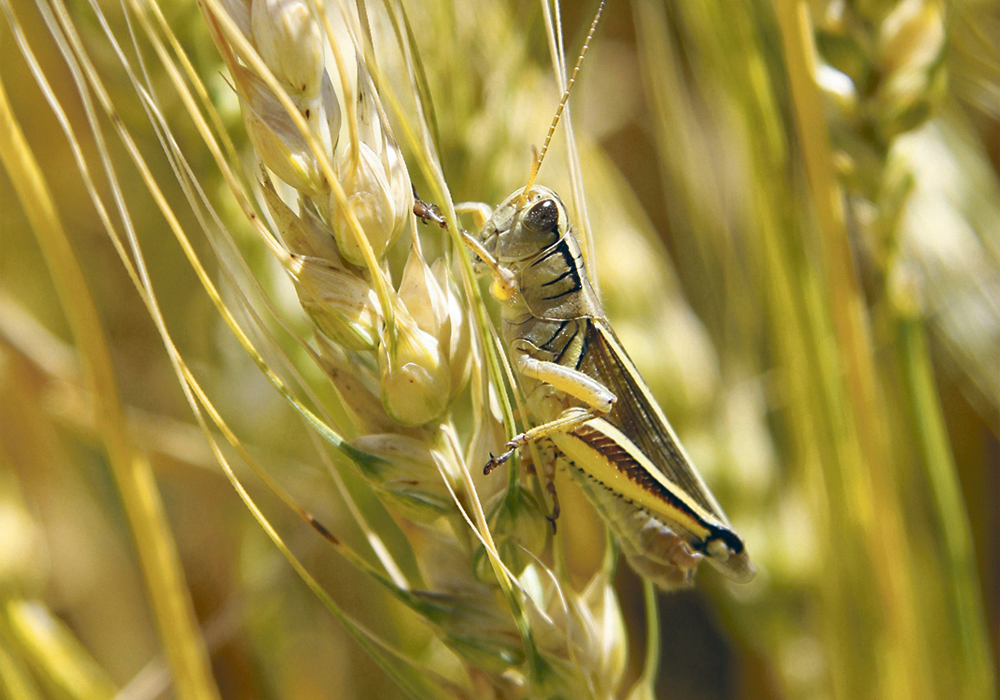Massive amounts of nitrogen can improve protein content in spring wheat, but the figures may not make logical sense
RED DEER — New preliminary research shows that farmers may be able to increase protein content in their spring wheat by adding more nitrogen, but it would require an inordinate amount that may seem unattainable.
The first-year trials, led by Agriculture Canada researchers last year, indicate that 107 to 214 pounds of urea per acre, depending on location and soil, were required to achieve optimal yield and protein levels of 13 percent.
Those levels are likely logistically challenging and costly for farmers, said Sheri Strydhorst, an agronomy research scientist with Alberta Agriculture, but it shows that more nitrogen unlocks better protein content levels.
Read Also

Canadian Food Inspection Agency slammed for handling of bovine tuberculosis case
The federal government leans heavily on producers to “take one for the team” and risk their livelihoods without any reassurance of support.
“At the end of the day, protein management is going to require higher nitrogen fertilizer rates than what we are used to,” said Strydhorst, who shared the data while speaking Jan. 8 at the Agronomy Update in Red Deer.
“It may not necessarily be a dumb economic decision to add more nitrogen, but there is more work to do to determine what works for optimal yield and protein, as well as what makes economic sense.”
Researchers have been focusing on the relationship between nitrogen and protein levels because some high-yielding CWRS cultivars often lack protein.
High yields in some cultivars usually mean a reduction in protein, Strydhorst said.
Growers are looking to achieve at least 13 percent protein to reach top grade, and their wheat is downgraded when they don’t, she added. Even new high-yielding cultivars struggle to meet the requirement.
“This is becoming an agronomic struggle for a number of growers to meet those minimum protein requirements,” she said.
The climate and soil conditions should be taken into account when analyzing the data from the 2019 trial, Strydhorst said.
The trial sites in Alberta included Bon Accord, which experienced high-moisture conditions in June and September; Barrhead, which didn’t get as much rain; and Lethbridge, which had good moisture initially but was dry during the growing season. Lethbridge was also under irrigation.
Researchers added zero, 50, 107, 161 and 214 lb. per acre of nitrogen to the trials, which translated to zero, 115, 233, 350 and 465 lb. per acre of actual urea product.
The applications were deep banded, meaning urea was going three to four inches deep into the soil.
Barrhead, which already had 70 lb. per acre of residual nitrogen, needed 231 lb. of nitrogen per acre for protein levels to peak and 177 lb. per acre for peak yield.
Bon Accord, with 46 lb. per acre of residual nitrogen, needed roughly 260 lb. per acre of nitrogen for peak protein and 207 lb. per acre for peak yield.
Lethbridge, with 86 lb. of residual nitrogen, needed 300 lb. per acre for peak protein and 140 lb. per acre for peak yield.
“This is not necessarily what you want to achieve,” Strydhorst said.
“And, remember, we always saw that more nitrogen was needed for peak protein than what was required for peak yield.”
During her presentation, Strydhorst pointed to a number of factors that dictate protein levels.
The first one, the environment, is the most challenging to control. Heat stress and drought tend to increase protein levels, but they affect yield negatively.
The second is differences in cultivars, Strydhorst said. Some tend to have higher protein levels than others.
For instance, she said previous trials have shown that CDC Titanium has higher protein levels than CDC Landmark.
Crop rotations may also play a role, she added, pointing to data that shows wheat planted into pulse stubble, particularly peas, received a protein boost because nitrogen is released from its residues.
Nitrogen application is the next big factor.
“I think, historically, we have very much set our nitrogen rates based on yield goals,” Strydhorst said.
“Our protein goals actually require higher nitrogen rates.”
Strydhorst said past research showed that adding nitrogen during the anthesis (flowering) stage can spur protein content levels.
The quantity of nitrogen will also vary, she added. One study in Kansas found that when researchers added 50 lb. of nitrogen per acre at the flowering stage, they managed to boost protein from 12 to 16.4 percent.
The study showed an additional 30 lb. resulted in an increase from 12 to 12.75 percent, and that an additional 10 lb. increased protein from 12 to 12.25 percent.
Strydhorst questioned the boost that resulted from the 50 lb. addition, but it suggests that doing a small top-up (around two lb. per acre) of nitrogen during flowering is ineffective.
“When I get a call from a grower and they say they are going to top up with nitrogen and will use two lb. of nitrogen at anthesis, guess what? Don’t waste your time,” she said.
In 2017 and 2018 studies, researchers in Alberta added various nitrogen levels to AAC Brandon and AAC Viewfield.
Levels ranged from zero to 201 lb. per acre. The additions might seem high, Strydhorst said, but researchers wanted to see how far they could go before protein plateaued.
In the end, they found AAC Brandon required 160 lb. per acre of additional nitrogen while AAC Viewfield needed 196 lb. per acre to achieve 13.5 percent protein.
As for the 2019 trial, researchers plan on continuing it for four years. They hope to provide producers with an idea of how much nitrogen is required for yield and protein under specific environmental conditions.
















